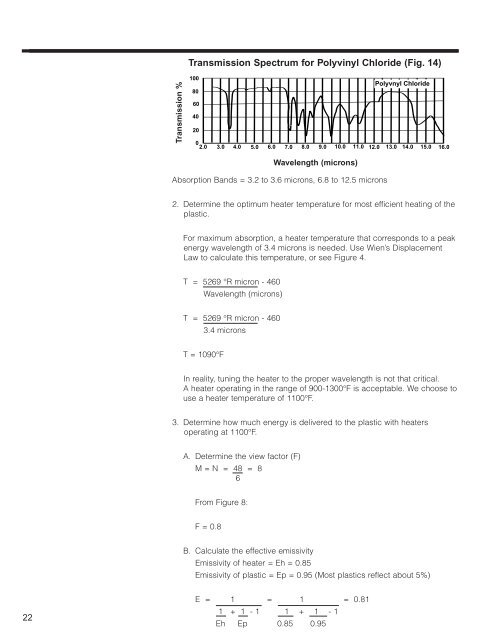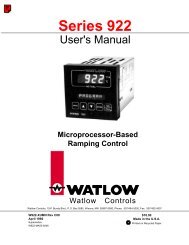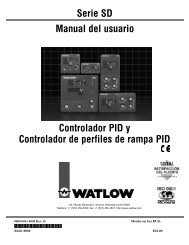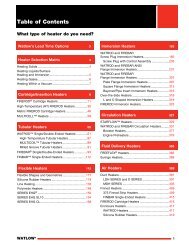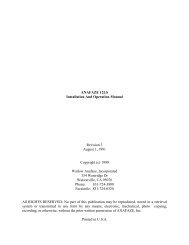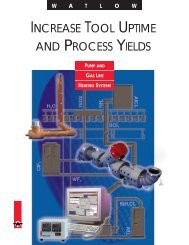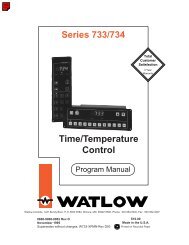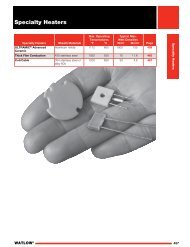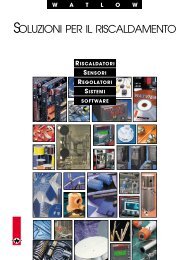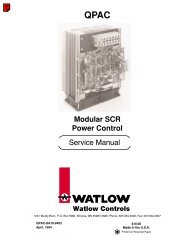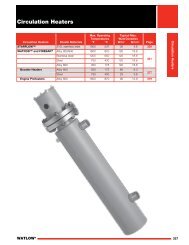RADIANT HEATING WITH INFRARED - Watlow
RADIANT HEATING WITH INFRARED - Watlow
RADIANT HEATING WITH INFRARED - Watlow
You also want an ePaper? Increase the reach of your titles
YUMPU automatically turns print PDFs into web optimized ePapers that Google loves.
22<br />
Transmission %<br />
Transmission%<br />
Transmission Spectrum for Polyethylene (Fig. 12)<br />
Transmission Spectrum for Polyvinyl Chloride (Fig. 14)<br />
100<br />
80<br />
60<br />
40<br />
20<br />
0<br />
2.0 3.0 4.0 5.0 6.0 7.0 8.0 9.0 10.0 11.0 12.0 13.0 14.0 15.0 16.0<br />
Absorption Bands = 3.2 to 3.6 microns, 6.8 to 12.5 microns<br />
2. Determine the optimum heater temperature for most efficient heating of the<br />
plastic.<br />
For maximum absorption, a heater temperature that corresponds to a peak<br />
energy wavelength of 3.4 microns is needed. Use Wien’s Displacement<br />
Law to calculate this temperature, or see Figure 4.<br />
T = 5269 °R micron - 460<br />
Wavelength (microns)<br />
T = 5269 °R micron - 460<br />
3.4 microns<br />
T = 1090°F<br />
In reality, tuning the heater to the proper wavelength is not that critical.<br />
A heater operating in the range of 900-1300°F is acceptable. We choose to<br />
use a heater temperature of 1100°F.<br />
3. Determine how much energy is delivered to the plastic with heaters<br />
operating at 1100°F.<br />
A. Determine the view factor (F)<br />
M = N = 48 = 8<br />
6<br />
From Figure 8:<br />
F = 0.8<br />
Wavelenght (microns)<br />
Wavelength (microns)<br />
B. Calculate the effective emissivity<br />
Emissivity of heater = Eh = 0.85<br />
Emissivity of plastic = Ep = 0.95 (Most plastics reflect about 5%)<br />
E = 1 = 1 = 0.81<br />
1 + 1 - 1 1 + 1 - 1<br />
Eh Ep 0.85 0.95<br />
Polyvnyl Chloride


